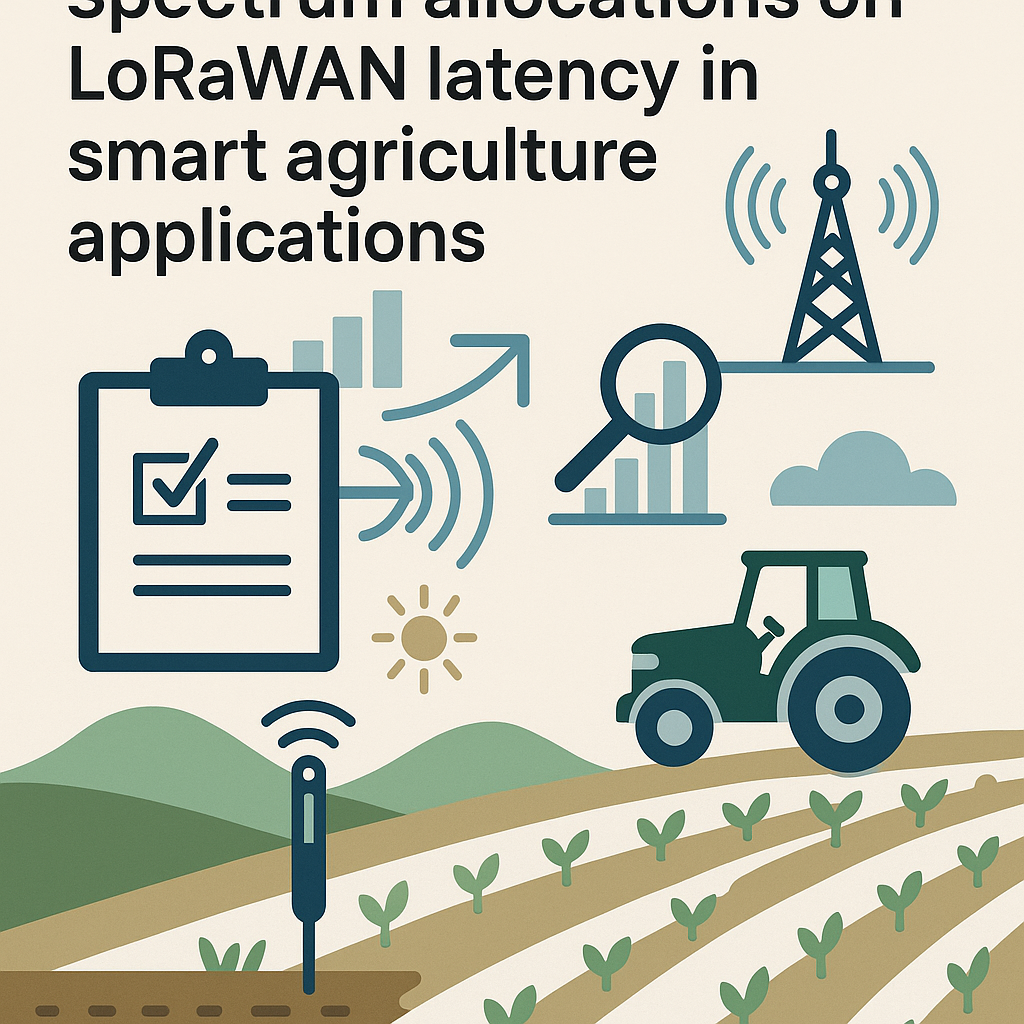Introduction
The introduction of new regulatory spectrum allocations has significant implications for various communication technologies, including LoRaWAN (Long Range Wide Area Network). In smart agriculture applications, optimizing latency is crucial for ensuring real-time data transmission and responsiveness. This blog post evaluates how these new regulatory measures impact LoRaWAN latency in the context of smart agriculture.
Understanding LoRaWAN in Smart Agriculture
LoRaWAN is a low-power, wide-area networking protocol designed for wireless battery-operated devices. Its key features include:
- Long Range: Capable of transmitting data over several kilometers.
- Low Power Consumption: Allows devices to operate for years on small batteries.
- Scalability: Supports a large number of devices in a single network.
These characteristics make LoRaWAN an ideal choice for smart agriculture applications, where devices such as sensors and actuators are deployed across vast fields to monitor soil moisture, crop health, and environmental conditions.
The Role of Regulatory Spectrum Allocations
Regulatory bodies allocate spectrum to ensure efficient use of radio frequencies while minimizing interference. Recent changes in spectrum allocations can influence the performance of LoRaWAN networks. Some key aspects include:
- Frequency Bands: New allocations may introduce additional frequency bands, potentially reducing congestion and enhancing performance.
- Channel Width: Wider channels can allow for higher data rates, which might help reduce latency.
- Duty Cycle Regulations: Changes in duty cycle regulations can affect how often devices can transmit, influencing overall latency.
Evaluating Latency in LoRaWAN
Latency in LoRaWAN networks can be defined as the time taken for a data packet to travel from a device to the application server. Various factors influence this latency:
- Transmission Time: The duration it takes to send data over the network, influenced by data rate and packet size.
- Retransmission: If packets are lost, they may need to be retransmitted, adding to latency.
- Network Congestion: More devices on the network can lead to increased competition for bandwidth, leading to delays.
Impact of New Regulatory Spectrum Allocations on Latency
With the introduction of new regulatory spectrum allocations, the following impacts on LoRaWAN latency can be observed:
1. Reduced Congestion
By introducing new frequency bands, networks can experience reduced congestion. This can lead to:
- Faster transmission times due to less interference from competing devices.
- Lower rates of packet loss, reducing the need for retransmission.
2. Enhanced Data Rates
With the ability to utilize wider channels, LoRaWAN can achieve higher data rates. This enhancement can result in:
- Quicker data packet transmission, which directly reduces latency.
- Improved overall responsiveness of smart agriculture applications, facilitating timely decision-making.
3. Modifications in Duty Cycle Regulations
If new regulations allow for increased duty cycles, devices can transmit more frequently. This change can lead to:
- Reduced waiting time for data to be sent, thereby decreasing latency.
- More timely updates on environmental conditions, which is critical for precision agriculture.
4. Implementation Challenges
Despite the potential benefits, the transition to new regulatory allocations may present challenges:
- Device Compatibility: Existing devices may not support new frequencies or wider channels.
- Infrastructure Updates: Network infrastructure may need upgrading to fully leverage new spectrum efficiencies.
- Regulatory Compliance: Adhering to new regulations can require significant adjustments in operational procedures.
Case Studies in Smart Agriculture
To illustrate the impact of these changes, consider the following case studies:
Case Study 1: Soil Moisture Monitoring
In a pilot project utilizing new spectrum allocations, farmers reported:
- A 40% reduction in latency for soil moisture data transmission.
- Enhanced irrigation responses, leading to water conservation.
Case Study 2: Crop Health Monitoring
Another study focused on crop health sensors found:
- Faster detection of pest infestations due to reduced data transmission times.
- A significant increase in yield as a result of timely interventions.
Conclusion
The evaluation of new regulatory spectrum allocations reveals noteworthy advantages for LoRaWAN latency in smart agriculture applications. By reducing congestion, enhancing data rates, and allowing for more frequent transmissions, these regulatory changes hold the promise of significantly improving the effectiveness and efficiency of agricultural practices. However, stakeholders must navigate the challenges associated with the transition to fully realize these benefits. Ongoing analysis and adaptation will be essential as the landscape of agricultural technology continues to evolve.



